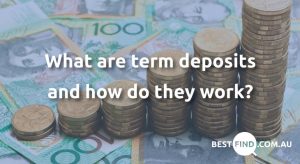What is a credit card interest free period and how does it work?
Interest free periods explained
Interest free days are a feature of some Australian credit cards that allow cardholders to make interest-free purchases during a specific period. While a great way to cut down your interest payments, they require that you completely repay the outstanding balance on your credit card statement by the due date.
So how does it work?
Taking advantage of interest free days
What happens when the interest free days end?
To enjoy interest free periods, it’s necessary to completely pay off your credit card’s outstanding balance on or before the due date shown on your statement. When your unpaid balance isn’t settled on time every month, banks and credit card providers will not offer this option. Instead, you’ll be charged interest on the outstanding payments.
How to get the most from your interest free periods
Interest free periods start at the same time as the billing cycle, it’s a common mistake to make a purchase towards the end of the interest-free days. If this happens, you could leave yourself with little time to repay your outstanding balance and enjoy the interest-free benefits of the next cycle.
For example, if you made a purchase on day 1 of a statement period, you could have 55 days to pay it off before interest is applied to the balance. If you make a purchase on the 30th day of the a statement period, you would have 25 days to pay it off before interest is applied.
Tips for saving with interest free periods
Interest-free periods aren’t a feature of every credit card, and as we’ve mentioned it’s important not to forget your due date. It’s good practice to:
- Choose a credit card that offers interest-free periods when you’re first setting it up with your issuer;
- Always pay the entire outstanding balance by the due date on your statement;
- Read the fine print, some credit cards may only offer interest-free periods for a certain amount of time;
- Organise direct debits or reminders to pay your balance on or before it’s due;
- Stay away from using your credit card for cash advances if you can.
What else do I need to know when using a credit card with interest-free days?
Interest-free days are a great feature to take advantage of if you can. When cutting down your costs through interest free periods though, there are several things to keep an eye on:
- Interest free periods vary. Interest free periods will usually be different for each credit card provider. Due dates and billing cycle dates may even vary between different cards from the same provider, so be aware.
- Only ‘eligible purchases’ count. Not everything you use your credit card to buy will be interest-free during the period. Chances are that most of your day-to-day purchases including petrol, groceries and so on will be covered, but it’s not unusual for cash advances, government payments, gambling sites and some utility bills to be excluded.
- Full monthly repayment. Often, interest free periods are only offered when a cardholder has completely paid off their outstanding balance at the end of the billing cycle. In most if not all cases therefore, making the minimum payment shown on your statement won’t be enough to enjoy this perk.
- Balance transfer debts. Interest-free days may only be available as an option if you don’t already have existing debt from a balance transfer. It’s possible to consider a card specifically offering an introductory interest-free period for both purchases and transfers, if you wish to do both.
Looking to get a credit card? Compare credit cards here.
Latest posts

What You Should Know: Comprehensive vs. Third Party Car Insurance.
28.07.2020

What You Need to get a Mortgage in Australia
11.04.2019

What is a term deposit and how does it work?
04.06.2018
